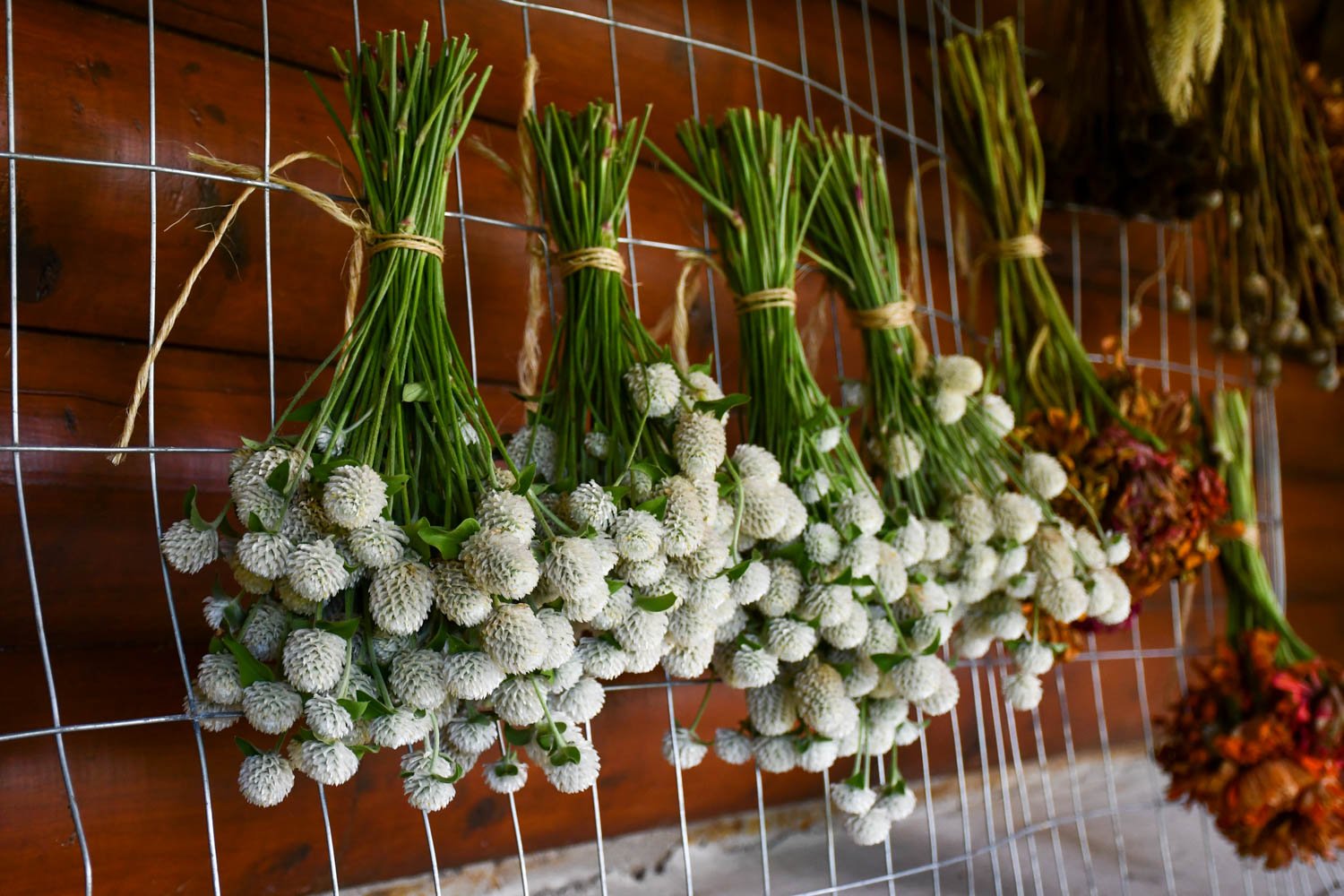Every August I pay attention to what plants don’t look like they’ve just been through the oven. I want the garden to look fresher in midsummer without having to water so much. One species that I’ve learned I can depend on is Gomphrena globosa.
Yes, it might seem odd to suggest an annual that has to be planted every year as many of them are dependent on irrigation, but it is so worth having globe amaranth for the explosive growth come the dog days of summer. Before the glorious two inches of slow rain this week from tropical systems, we were bone dry, and yet, Gomphrena continued to thrive and bloom. In Armitage’s Manual of Annuals, Biennials, and Half-hardy Perennials, he quotes a Texas cut flower grower joking that the plant grew at the gates of hell, hence its ability to take the heat.
One of the reasons that Gomphrena is able to tolerate the hot, dry Texas summers so well is that it is a C4 plant. C4 plants have a different type of photosynthesis where they are more efficient at capturing carbon during high heat and drought conditions. It is not unique to Gomphrena as C4 photosynthesis has evolved in different families. Corn and sugarcane, also good warm-weather growers, also share this type of photosynthesis.
Wild and wooly with Gomphrena globosa ‘Ping Pong White’, Zinnia elegans ‘Benary’s Giant’ cultivars, and Gossypium herbaceum ‘Nigrum’
I’ve had the goal to enclose the patch where I have my vegetable garden, cut flowers, and trial plants with a double fence, and I finished building the inner front fence of the patch this past winter. There’s two beds on either side of a narrow pathway in the six feet of space. I envision this front area as a place where the planting scheme will change with the seasons. This year, I planted a plethora of Gomphrena globosa ‘Ping Pong White’ in the beds between the fences. It acts as a groundcover for Zinnia elegans ‘Benary’s Giant’ cultivars (zinnia) and Gossypium herbaceum ‘Nigrum’ (black-leaf cotton).
But, the Gomphrena have grown so thick we can’t see the ground of the path. It amazes me how plugs planted two feet apart now hide any bare soil.
Karen has taken to drying more flowers this summer, and the pathway becomes visible again once she makes a pass through cutting flower stems. Our backporch has become a drying room for Gomphrena and other stems. It is a wonderful cut flower and dries well. At night we sit on the porch and strip leaves and make posies of the flowers to preserve this celebration of summer a little longer.
The first of many posies to come of globe amaranth
I’ll likely thin the plants out in the next month. Underneath them are over 1,000 Lycoris radiata bulbs ready to spring forth. I thought the red and white together would be a nice combination.
But, I will leave a few until frost. Years ago when we first planted globe amaranth, the plants the froze in the fall, and the White-throated Sparrows loved tearing the flowers apart and scouring the ground underneath for seed.
The dog days of summer are fading, and I can’t wait for the winter birds to return.
Cut flowers have been filling a pitcher we brought back with us from the Hauser & Wirth farm store in England. This week, it is festooned with Gomphrena globosa ‘Ping Pong White’.



